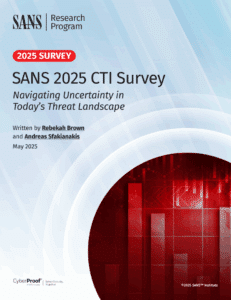In today’s digital age, cybersecurity threats have become more complex and frequent. Enterprises face an expanding attack surface due to factors such as cloud computing, remote work, third-party integrations, and an increasing number of connected devices. Traditional security methods, which focus on reactive threat detection, are no longer sufficient to protect organizations from sophisticated cyber threats. Instead, a proactive approach to cybersecurity is needed—one that includes attack surface management as a fundamental strategy.
Attack surface management involves the continuous discovery, monitoring, and reduction of an organization’s attack surface to mitigate cybersecurity risks. It ensures that all assets, whether known or unknown, are regularly assessed for vulnerabilities and security gaps. When combined with continuous threat exposure management, security operations, and vulnerability assessment, ASM strengthens enterprise cybersecurity by reducing the chances of cyberattacks and ensuring a resilient security posture.
This article explores how ASM functions, its key components, and the ways in which it enhances enterprise cybersecurity to safeguard critical digital assets.
Understanding Attack Surface Management
What Is an Attack Surface?
An enterprise’s attack surface consists of all the digital and physical assets that could be exploited by cybercriminals. These assets can include:
- Internet-facing systems: Websites, APIs, cloud services, and SaaS applications.
- On-premises infrastructure: Servers, databases, network devices, and internal applications.
- Endpoints: Laptops, mobile devices, IoT devices, and remote workstations.
- Human elements: Employees, third-party vendors, and external partners with access to enterprise systems.
As enterprises expand their digital presence, their attack surface grows, increasing the risk of cyber threats. Without attack surface management, organizations are often unaware of hidden or unmanaged assets, which become easy targets for cybercriminals.
The Core Components of Attack Surface Management
Attack surface management is a continuous process that involves three critical components:
- Discovery: Identifying all assets connected to the organization’s IT environment, including shadow IT and unmanaged resources.
- Assessment: Evaluating vulnerabilities, security misconfigurations, and exposure points across discovered assets.
- Mitigation: Implementing remediation strategies to address security gaps and reduce risks.
By continuously monitoring and analyzing digital assets, ASM functions as a continuous threat exposure management solution, ensuring that new risks are detected and mitigated in real time.
How Attack Surface Management Strengthens Enterprise Cybersecurity
1. Continuous Threat Exposure Management
Cyber threats evolve rapidly, and traditional security assessments often fail to keep up with emerging vulnerabilities. ASM provides continuous threat exposure management by:
- Performing real-time asset discovery: Identifying new, unmonitored, or unapproved digital assets.
- Detecting shadow IT: Preventing unauthorized applications and cloud services from creating security gaps.
- Automating security scans: Uncovering vulnerabilities and misconfigurations before they can be exploited.
By maintaining continuous threat exposure management, enterprises gain real-time visibility into their attack surface, ensuring that security teams can respond swiftly to new threats.
2. Enhancing Security Operations
Security teams are often overwhelmed with alerts from multiple security tools, leading to alert fatigue and delayed responses. ASM enhances security operations by:
- Prioritizing threats: Ranking vulnerabilities based on their exploitability and business impact.
- Integrating with SIEM and SOAR: Feeding attack surface data into Security Information and Event Management (SIEM) and Security Orchestration, Automation, and Response (SOAR) systems for faster incident resolution.
- Reducing false positives: Filtering out low-risk alerts, allowing security teams to focus on critical threats.
By streamlining security operations, ASM enables enterprises to improve response times and prevent potential security breaches more efficiently.
3. Improving Vulnerability Assessment and Risk Management
A key function of attack surface management is performing a thorough vulnerability assessment of all enterprise assets. Unlike periodic vulnerability scans, ASM continuously evaluates risks, even on unmanaged or unknown assets.
ASM strengthens vulnerability assessment by:
- Identifying misconfigurations that could expose sensitive data or allow unauthorized access.
- Mapping external and internal assets to determine exposure points.
- Providing actionable insights to accelerate remediation and reduce attack likelihood.
By integrating ASM with vulnerability assessment, organizations can proactively secure their digital infrastructure and prevent cyber incidents before they occur.
4. Mitigating Third-Party and Supply Chain Risks
Enterprises rely on numerous third-party vendors, cloud services, and external partners, expanding their attack surface. ASM helps manage these risks by:
- Continuously monitoring third-party integrations for security vulnerabilities.
- Conducting security assessments of external vendors and service providers.
- Detecting potential supply chain threats before they impact enterprise systems.
By incorporating ASM into third-party risk management strategies, enterprises can minimize exposure to supply chain attacks and data breaches.
5. Strengthening Cloud Security
Cloud environments are dynamic and often difficult to secure. ASM enhances cloud security by:
- Discovering and cataloging all cloud assets across multiple providers (AWS, Azure, Google Cloud).
- Detecting misconfigurations that could lead to unauthorized access or data leaks.
- Ensuring compliance with cloud security best practices and policies.
By continuously monitoring cloud environments, ASM reduces cloud-related security risks and enhances data protection.
6. Reducing Attack Dwell Time
Attack dwell time refers to how long a threat remains undetected within an enterprise system. The longer an attacker lingers, the greater the damage they can cause. ASM helps reduce dwell time by:
- Detecting unauthorized access attempts in real time.
- Identifying early indicators of compromise through anomaly detection.
- Continuously monitoring the attack surface to spot security gaps.
By minimizing dwell time, ASM prevents prolonged cyber intrusions and strengthens enterprise defenses.
Implementing an Effective Attack Surface Management Strategy
To maximize the benefits of attack surface management, enterprises should adopt these best practices:
- Take a risk-based approach: Prioritize security efforts based on business impact and criticality.
- Automate asset discovery and security monitoring: Use AI-driven tools for real-time threat detection.
- Integrate ASM with existing security frameworks: Connect ASM with security operations, vulnerability assessment, and SIEM/SOAR platforms.
- Regularly update security policies: Ensure security policies evolve with the organization’s IT environment.
- Train employees and stakeholders: Educate teams on the importance of attack surface security and best practices.
For more information Get in touch with us today by visiting CyberProof.
Conclusion
As cyber threats continue to evolve, attack surface management is no longer optional—it is essential for enterprise cybersecurity. By integrating ASM with continuous threat exposure management, security operations, and vulnerability assessment, organizations can proactively mitigate risks, improve threat detection, and strengthen overall security resilience.
Enterprises that embrace ASM gain a strategic advantage in defending against cyberattacks, ensuring compliance, and protecting sensitive data. As attack surfaces continue to expand, investing in attack surface management will be a key differentiator in maintaining a strong cybersecurity posture.
FAQ
Why is ASM important for enterprises?
Enterprises face an ever-expanding attack surface due to factors like cloud adoption, remote work, and third-party integrations. Without proper visibility and control over their digital assets, organizations are vulnerable to cyber threats, including data breaches, ransomware attacks, and supply chain vulnerabilities. ASM helps enterprises maintain a proactive security stance by continuously assessing risks, identifying security gaps, and implementing mitigation strategies to protect sensitive data and business operations.
How does ASM differ from traditional security measures?
Traditional security approaches focus on reactive threat detection, meaning they identify and respond to cyber threats after they occur. ASM, on the other hand, takes a proactive approach by continuously scanning for vulnerabilities, misconfigurations, and security gaps before they can be exploited. It also provides real-time monitoring of digital assets, whereas traditional security methods often rely on periodic assessments that may not detect emerging risks in time.
What are the key components of ASM?
ASM consists of three main components that work together to protect an organization’s attack surface:
- Discovery: Identifying all assets connected to the enterprise, including unmanaged or shadow IT resources. This ensures security teams have full visibility over the organization’s digital footprint.
- Assessment: Continuously evaluating digital assets for vulnerabilities, misconfigurations, and exposure points. This includes risk prioritization based on the likelihood of exploitation and potential impact.
- Mitigation: Implementing security measures to remediate vulnerabilities and reduce the attack surface. This can involve patching, configuration updates, and access control improvements.
How does ASM help with continuous threat exposure management?
Continuous threat exposure management involves identifying, assessing, and mitigating security risks in real time. ASM plays a crucial role by:
- Performing real-time asset discovery: Detecting new, unmonitored, or unapproved digital assets before they become security risks.
- Detecting shadow IT: Preventing unauthorized applications, cloud services, and devices from introducing security vulnerabilities.
- Automating security scans: Running continuous security assessments to detect vulnerabilities, misconfigurations, and policy violations before they are exploited.
By maintaining continuous threat exposure management, enterprises gain enhanced visibility into their attack surface and can respond to threats before they lead to security incidents.
Can ASM improve security operations?
Yes, ASM significantly improves security operations by providing better visibility into an organization’s digital assets and helping security teams focus on the most critical threats. ASM enhances security operations by:
- Prioritizing threats: It ranks vulnerabilities based on factors such as exploitability, potential damage, and business impact, allowing security teams to address high-risk issues first.
- Integrating with SIEM and SOAR platforms: ASM feeds attack surface data into Security Information and Event Management (SIEM) and Security Orchestration, Automation, and Response (SOAR) systems. This enables security teams to automate responses and resolve incidents more efficiently.
- Reducing false positives: By filtering out low-risk alerts and non-critical issues, ASM helps security teams avoid alert fatigue and focus on genuine threats.













